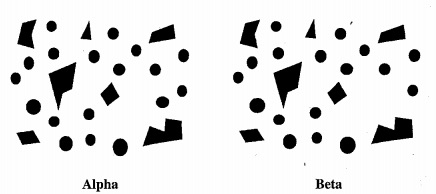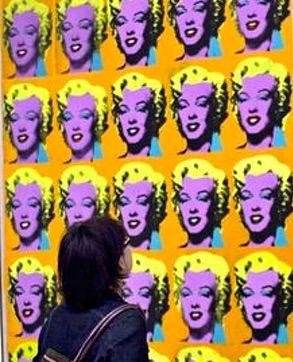Courses / 2015a2230notes HOT
HOT theory of consciousness
What is it?
The Higher-Order Thought Theory of consciousness: X is conscious when there is a higher-order thought (HOT) T about X.
@[A] mental state is conscious ... just in case one has a roughly contemporaneous thought to the effect that one is in that very mental state^^^Rosenthal@
Keep(implode('',file(str_replace('&','&','http://philosophy.hku.hk/joelau/code/HOT.html'))))
- T is an occurrent belief with the content: I am in X
- T happens nearly at the same time as X.
- The existence of T is not due to inference or observation.
- To rule out cases where you found out from someone else about an unconscious mental state you have.
- Being conscious is a relational property, not an essential property of any mental state.
- We need not have any awareness of T itself.
- T can be expressed by verbal reports.
Locke
@[A person] is a thinking intelligent Being, that has reason and reflection, and can consider it self as it self, the same thinking thing in different times and places; which it does only by that consciousness, which is inseparable from thinking, and as it seems to me essential to it: It being impossible for any one to perceive, without perceiving, that he does perceive.^^^Essay 2.27.9@
Supporting arguments and motivations
Some arguments from philosophy:
- Consciousness is always a matter of being aware of something.
- We are able to report our conscious mental states.
- Acquiring new phenomenal concepts can enrich our experience.
Some observations from neuroscience

See Lau, H., & Rosenthal, D. (2011). Empirical support for higher-order theories of conscious awareness. Trends in cognitive sciences, 15(8), 365-373.
- Stimulation of the prefrontal cortex can produce visual hallucinations.
- Hallucinatory experiences in patients with damage to their primary sensory cortices.
- Dissociation between task performance and subjective reports of consciousness.
- Performance at discriminating between two shapes can remain the same even though "subjects claimed to be consciously aware more frequently of the identity of the figure"
Objections to the HOT theory
The liver problem (HOT is not sufficient)
- The theory fails to explain why merely thinking about X will make X conscious.
- Ned Block: Thinking about the liver does not make the liver conscious, why should it be different with mental states?
- Byrne offers a few replies:
- X has to be a mental state. It is analytic (true in virtue of meaning) that only mental states can be conscious.
- Perhaps X has to be a sensory state. (This part of the reply is not very clear.)
The dog problem (HOT is not necessary)
- Dogs have conscious mental states, but it is not clear that it has HOTs. So maybe HOTs are not required for consciousness. (or human babies?)
- Reply #1: Maybe dogs do have rather limited HOTs. Perhaps enough to have HOTs about pain, but not enough to have HOTs about thoughts. So dogs have conscious pains but not conscious thoughts.
- Reply #2 (Byrne thinks it is better): dogs lack conscious experience.
- Neuroscience
- Damage to prefrontal areas does not diminish consciousness.
- Prefrontal cortex not present or not fully developed in children and animals.
- Dreaming: Low activity in dorsolateral prefrontal cortex and primary visual cortex during REM sleep. Frontal cortex and precuneus becomes more active during lucid dreaming.
Dretske’s objection
@there can be conscious differences in a person’s experience of the world – and in this sense, conscious features of his experience – of which that person is not conscious [i.e. aware].@

- The conscious experience of alpha is different from the conscious experience of beta, but we are not consciously aware of the difference.
- So we have no HOT of the difference in the experiences.
- So conscious awareness is not a matter of having a HOT.
Byrne's comment: I can have a HOT A’ of A, and later a different HOT B’ of B, but this does not imply that I know that A’ is different from B’.
Partial consciousness
- Byrne: It seems that on Rosenthal's account, it must be possible for a conscious mental state to be conscious in some respects but not others, e.g. being aware that a headache is painful but not being aware that it is a throbbing headache.
- But if so a number of other problems will arise:
- The inexpressibility problem - The content of perception seems more fine grained than the representational capacity for thoughts. The concepts of a HOT might not capture all the features of the experience that we are consciously aware of.
- The problem of the unthinkable thought - If the visual experience is immensely complicated, the corresponding HOT might not be one that I can entertain.
- The problem of introspection - In introspection we can become aware of our own awareness of a complex experience, but we do not seem to be aware of any complicated HOT.
Rosenthal's likely reply:
@No higher-order thought could capture all the subtle variation of sensory quality we consciously experience. So higher-order thoughts must refer to sensory states demonstratively, perhaps as occupying this or that position in the relevant sensory field@
Example: I am having a visual experience which is this, that, that, and that.
Byrne's rejoinder:
- The response "undercuts whatever reason there was to believe the higher-order thought hypothesis in the first place"
- The HOT is supposed to determine what it is like to have a lower-order mental state, but now it doesn’t do that anymore.
Byrne's objection
Step #1: HOTs can be mistaken about the lower-order experience
1. I have a visual experience as of a cat, but think that I have an experience as of a dog.
2. The Marilyn room

3. "Filling in" at the blindspot

4. Not being in pain, but thinking that one is in pain.
Since a mental state and the HOT are different, it ought to be possible that one exists without the other.
Step #2
- These cases seem to show that the HOT alone is sufficient for phenomenal consciousness.
- But this fails to explain how consciousness comes about.
A different way of putting the argument
- Option A: HOT by itself cannot be sufficient for consciousness, since being told about our lower-order states might not make them conscious.
- So perhaps it depends on the causal process that brings about the HOT.
- But why not say that the lower-order state is sufficient for consciousness if it is produced by the right causal process? This is equally plausible as an alternative.
- Option B: HOT by itself with the right "mode of presentation" is sufficient for consciousness.
- But a theory that takes lower-order sensory states to be sufficient for consciousness can appeal to the same move, i.e. sensory states with the right "mode of presentation" are sufficient for consciousness.
Conclusion
@the higher-order thought hypothesis cannot provide a more satisfactory explanation of phenomenal consciousness than an account that makes no mention of higher-order thoughts. And that is to say that it cannot provide a satisfactory explanation of phenomenal consciousness at all.@
Comments: If the HOT theory offers no theoretical advantage over the lower-order approach, then we would need to look at the empirical evidence more carefully.